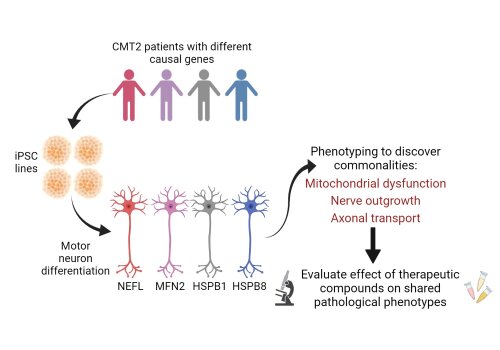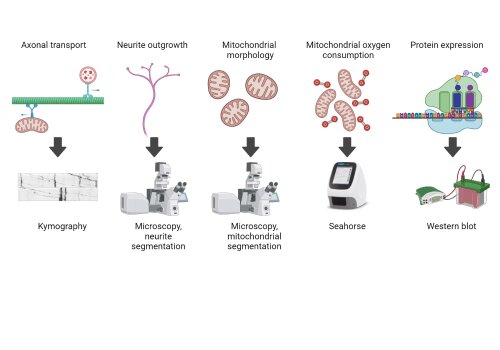SCREEN4PN makes use of induced pluripotent stem cell (iPSC) technology. We recently demonstrated that iPSC-derived nerve cells from CMT type 2 patients, caused by different gene mutations, share common features. Targeting these common features could allow for the development of a uniform therapy for CMT.
SCREEN4PN uses induced motor neurons derived from iPSC lines. These iPSC lines were obtained from CMT2 patients with different causal mutations. These motor neurons exhibit pathological phenotypes common to each patient line. SCREEN4PN evaluates the ability of potential therapeutic compounds in improving these common phenotypes (Fig 1).

Fig 1. The principles behind SCREEN4PN. iPSCs derived from CMT2 patients are differentiated into peripheral motor neurons. Potential therapeutic compounds are then evaluated on their ability to improve pathological phenotypes shared among the different patient lines. (Image created using BioRender)
The test platform currently includes: measuring nerve outgrowth, evaluating axonal transport parameters, characterizing the mitochondrial dysfunction, and phenotyping by means of microscopy techniques (Fig 2).

Fig 2. The current readout methods of SCREEN4PN, based on the phenotypes observed in the patient lines. (Image created using BioRender)
SCREEN4PN currently focuses on CMT2-targeted therapies. We aim to expand the platform in order to apply it to other peripheral neuropathies and neuromuscular disorders.